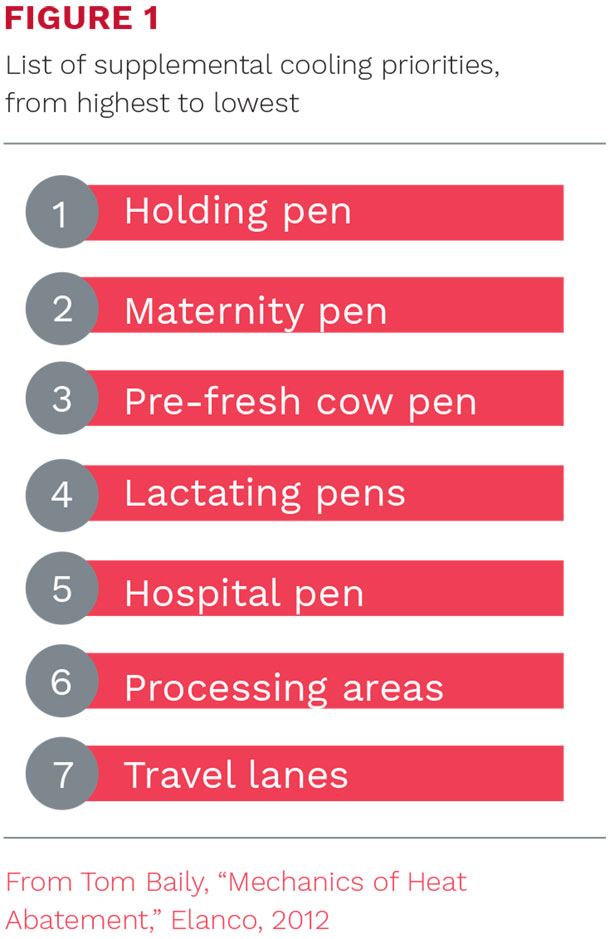
A 2016 study by Ferreira, et al. estimated New York dairy cows that experience heat stress during their dry period lose about 387 pounds of milk in their subsequent lactation. In 2018, Central New York experienced about 86 days of temperature and relative humidity high enough to cause significant heat stress in dairy cows (Chart 1).
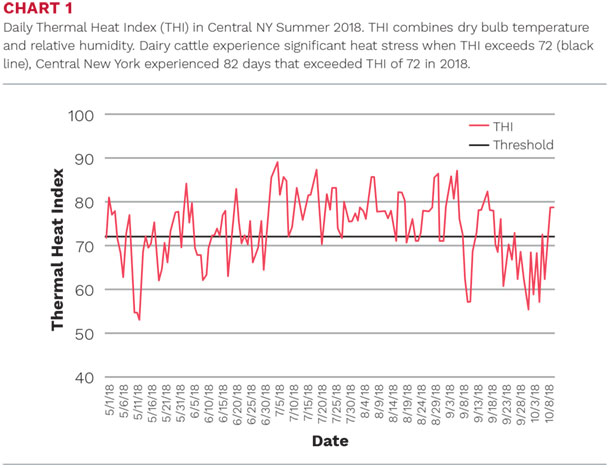 Unfortunately, many dry cow barns still have insufficient heat abatement strategies, and those farms will feel the economic impact. If a cow spends part of her dry period heat-stressed, not only will her next lactation performance decline, so will the performance of her calf, according to recent research.
Unfortunately, many dry cow barns still have insufficient heat abatement strategies, and those farms will feel the economic impact. If a cow spends part of her dry period heat-stressed, not only will her next lactation performance decline, so will the performance of her calf, according to recent research.
Researchers from the University of Florida and University of Georgia published multiple studies showing heat stressed dry cows give birth to lighter calves when compared to cooled dry cows (Chart 2).
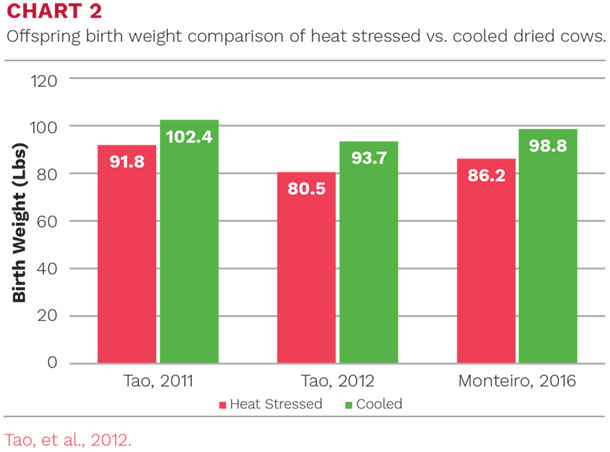
They also found calves that experienced heat stress in utero absorbed colostral antibodies less efficiently than calves born from cooled dry cows (Chart 3).
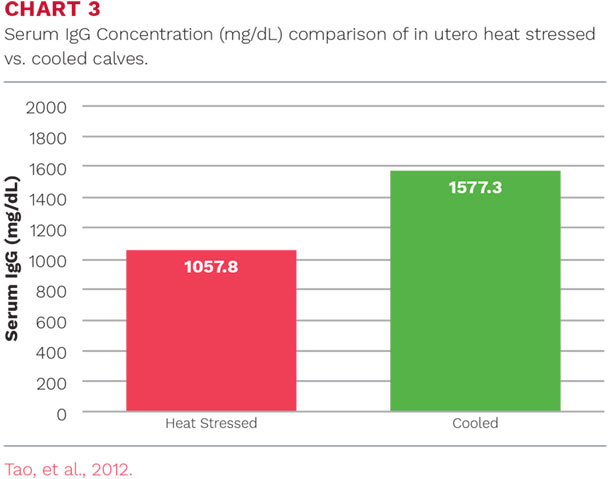
To evaluate cell mediated immune function, these researchers measured peripheral blood mononuclear cell (PMNC) proliferation in the calves (Chart 4).
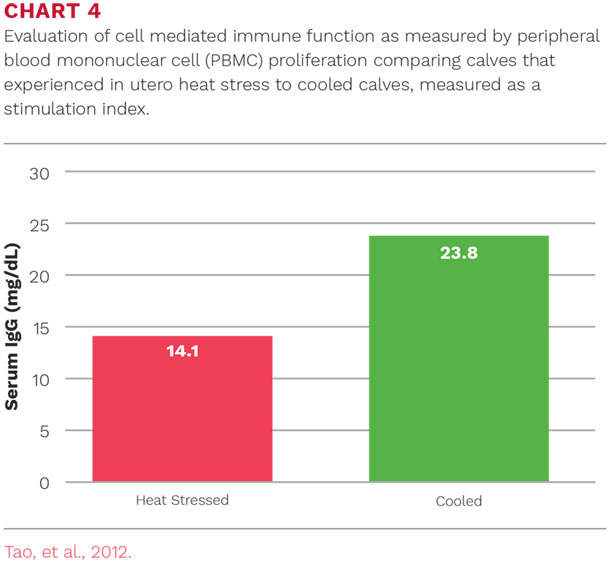
The ability to generate immune cells, like these mononuclear cells, is an important part of a good immune response. PMNC proliferation was significantly lower in the calves that experienced heat stress in utero compared to calves born from dry cows cooled during their dry period. Heifers cooled in utero later went on to conceive younger and required fewer services than heifers that experienced heat stress in utero (Chart 5 and 6).
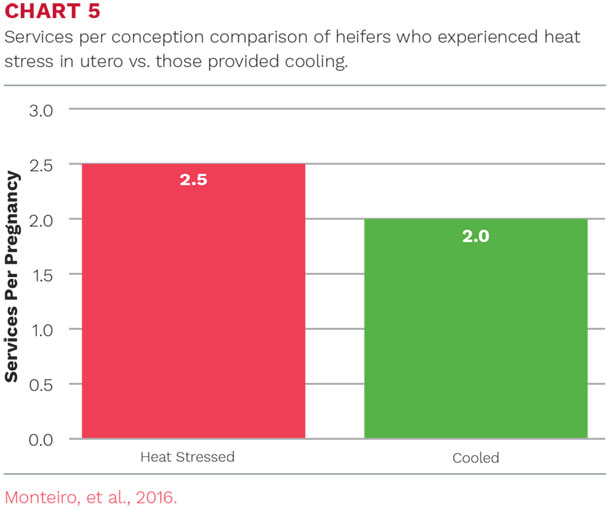
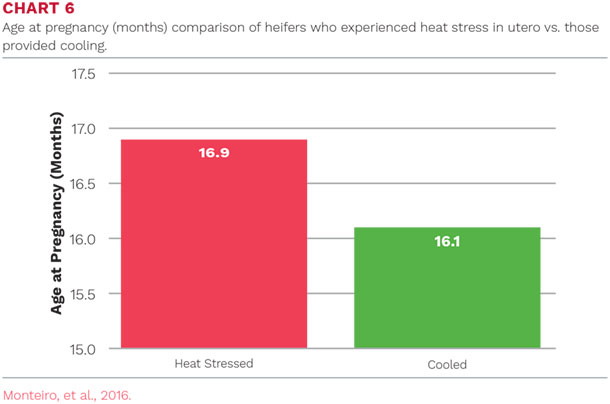 Performance benefits continued into the first lactation. Heifers cooled in utero made significantly more milk and were more likely to complete the lactation compared to the heifers that experienced heat stress in utero (Chart 7 and 8).
Performance benefits continued into the first lactation. Heifers cooled in utero made significantly more milk and were more likely to complete the lactation compared to the heifers that experienced heat stress in utero (Chart 7 and 8).
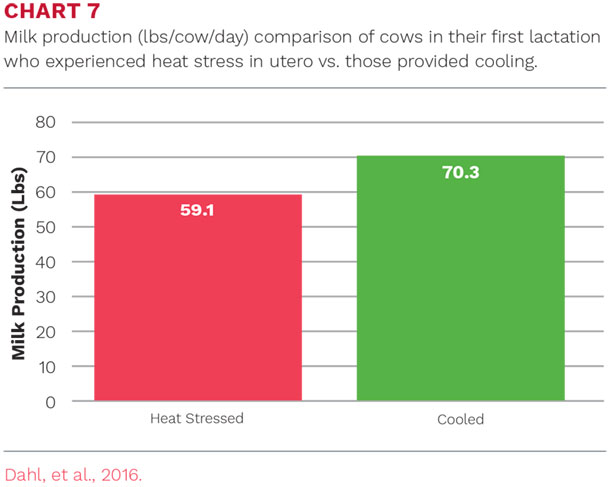
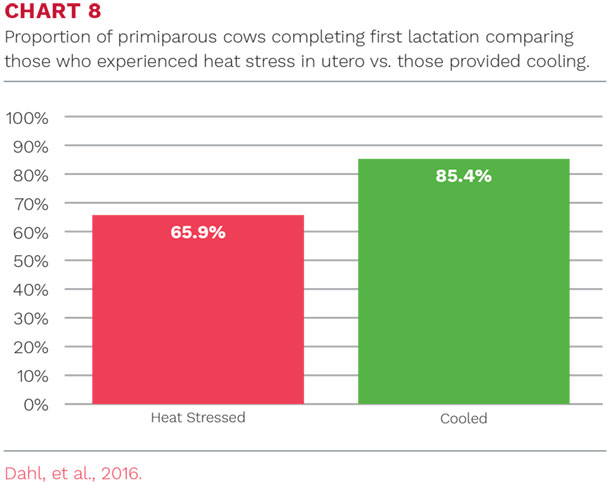
With all of these dry cow cooling benefits, is the heat abatement strategy in your dry cow barn sufficient? As the days start getting warmer, count some dry cow breathing rates. Cows breathing faster than 65 breaths per minute are likely experiencing heat stress.
Many of the same strategies used for milking cows can be used for the dry cows. Four elements impact heat abatement: shade, fan power, water and time (Figure 2).
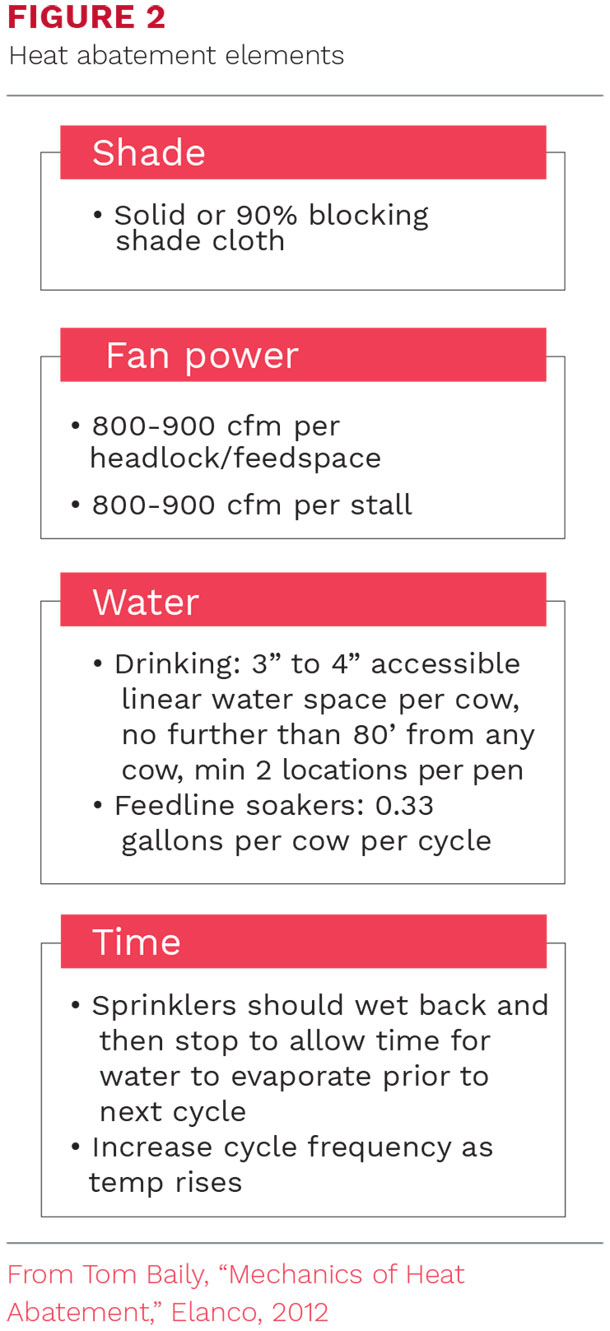
Air flow from circulating fans should cross over the backs of all cows at between 4 to 6 miles per hour. Feedline soakers can be used to wet cows to the skin and cycle off to allow time for the water to evaporate. Make sure drinking water access is sufficient in your dry cow pens. Each cow should have 3 to 4 inches of accessible linear water access. Each pen should have at least two water sources. This helps subordinate cows access water when a boss cow camps out in front of a water trough.
By providing a good heat abatement strategy to the dry cows they’ll perform better for you and so will their calves. ![]()
Robert A. Lynch, DVM, is a herd health and management specialist with Cornell PRO-DAIRY. Email Robert Lynch. (or call 607-882-5378)
This article appeared in PRO-DAIRY’s The Manager in July 2019. To learn more about Cornell CALS PRO-DAIRY program, visit PRO-DAIRY Cornell CALS.






